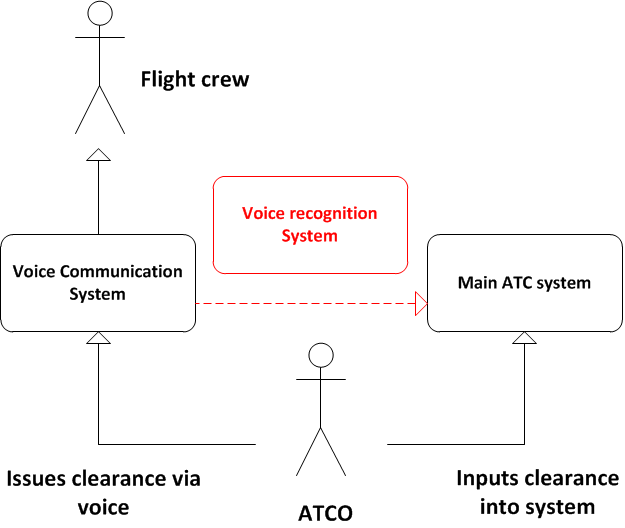Project partners have agreed and delivered SRS (System Requirement Specification) and Architecture Design Document to SJU. Workpackage 1 of the MALORCA project is formally closed now. SRS aims to deliver other partners with clear, coherent, and well-established requirements. The architecture document describes essential building blocks and interfaces for all the defined modules.
In current ATC operations environment, the controller issues ATC clearances and provides information to the flight crews by voice communications. For the effective operations, ATC systems need accurate data in timely manner where one of the necessary inputs are the ATC clearances. This input is manually done by the ATCO using the mouse or another control device through the interaction with a flight strip or label of the flight. The ATCO is expected to input the clearance into the system as he/she speaks. This could increase the ATCO workload and could decrease overall efficiency. Currently there is no link between the voice communication system and cooperating ATC system, see figure.

As a result, ATCO needs to perform two actions: issue the ATC clearance by voice and input the ATC clearance into the ATC system. However, the way of inputting ATC clearances into the system could be automated by the application of voice recognition system on the ATCO voice communications. As the ATCO speaks, voice recognition system would automatically extract ATC clearances and other data for particular flight and feed them into the ATC system for further processing and display.
The System Requirement Specification (D1.2) provides a structured list of generic requirements for the controller support tool based on speech recognition and forms a roadmap for building an operational system in the generic sense. Therefore, some of the requirements described in this document may not be fulfilled during the MALORCA project due to different constraints such as data availability and access to operational room, but are stated as a theoretical guideline that can be achieved if the described conditions are satisfied.
The Architecture Design Document (D1.3) describes the technical aspects of MALORCA project related to possibilities and efforts to integrating blocks of automatic speech recognition and machine learning into existing ATM systems. Besides describing an architecture of ABSR (acoustic and language models), machine learning (unsupervised or semi-supervised adaptations), and hypothesis generator, this document also describes data formats which can be used to exchange information among all modules, so-called data elements (radar data, voice recordings, transcriptions, extracted commands, command hypotheses, etc.) and provides a brief overview of proof-of-concept architecture.
The purpose is to propose an initial architecture of the system, inter-connecting voice commands automatically extracted from verbal communication stored in controllers’ recordings with other types of data (such as those extracted from radar) to introduce a higher level of automation in the Air Traffic Management world. In the context of MALORCA, the following modules are being taken under consideration:
- Assistant Based Speech Recognition (ABSR): a speech recognition module which can convert a controller utterance into a sequence of commands by using different speech recognition models. This process of conversion is assumed to work in an online mode and is combined with an assistant system which generates context information to reduce the search space of the speech recognizer.
- MALORCA Learning System (MLS): It can automatically or semi-automatically learn/adapt the ABSR models from data being processed by the system.
